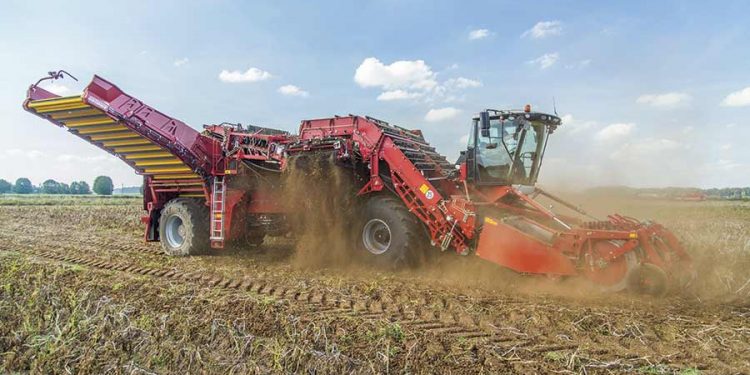The Red River Valley in North Dakota is expecting a good crop of high-quality potatoes for 2024. According to David Moquist of O.C. Schulz & Sons, “The yield seems to be about average to above average.”
Harvest Timing
This season’s timing appears to be consistent with last year’s performance and aligns with historical trends. However, the weather has not followed suit. “We’re running about 10 degrees warmer than normal for this time of year, so the harvest isn’t steady,” Moquist explains. “We’ve been harvesting primarily in the mornings, avoiding afternoons. Since we began, we’ve only completed two full days of harvest. We started yesterday morning but had to shut down around noon, and it looks like this pattern will continue for the next few days. The lack of hours for harvesting has been our biggest challenge.”
Typically, the harvest would conclude by approximately October 5th. While it is still possible to meet this timeline, it heavily depends on upcoming weather conditions, with the harvest potentially extending to around October 10th.
Acreage Developments
This year’s acreage in the Red River Valley, particularly for fresh potatoes, has decreased by about two to three percent on average. The reduction is more significant for red potatoes, while the decline for yellow potatoes is less pronounced. “There’s a shift from red potatoes to yellows, similar to trends in many other areas,” says Moquist.
Demand and Pricing
Regarding demand, red potatoes are experiencing fairly good interest, but supply is currently limited. “Yellow potato supplies seem to be adequate nationwide, so we will need to observe how demand and supply align,” he adds. Moquist anticipates that demand for red potatoes will meet supply effectively.
While pricing remains undecided, there is an expectation that red potato prices will be higher than last year, whereas yellow potatoes may see slightly lower prices. “The key factor for yellows is balancing how many need to be shipped from the field with how supply will look once we’re all in storage,” Moquist concludes.








